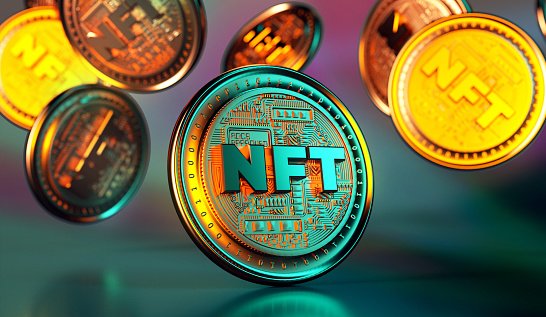Introduction.
Alright, imagine you’re trying to explain the internet’s latest evolution—something called “Web3”—to a young kid, maybe around ten years old.
That can sound like a pretty big challenge, right? The idea of Web3 is packed with terms like “blockchain,” “decentralization,” and “tokens.” It’s a lot to take in, even for adults!
But underneath the techy language, Web3 is really about giving people more control, more privacy, and more security online.
So why should kids care about it? Well, they’re growing up in a world that’s way more digital than ours was, and Web3 might shape their internet experience as they get older.
If they can understand the basics of what Web3 is, they’ll be better prepared to navigate it safely and responsibly.
This article will break down Web3 into ideas a kid can easily understand. It will use simple analogies, like comparing the internet to a big playground or imagining it as a huge digital library. By the end, explaining Web3 to a child won’t seem so impossible.
I’ll also answer some common questions about Web3 along the way, so if you’re ready to explain this “next-gen” internet to your child (or anyone else), this guide is for you.
What is Web3 in Simple Terms?
To put it simply, Web3 is the latest version of the internet. Let’s start by going back a bit:
- Web1 (The Early Internet): Imagine Web1 as a giant online library where people could read articles or see pictures, but couldn’t do much more. It was a “read-only” internet, where people could only view information but couldn’t interact much.
- Web2 (The Interactive Internet): Web2 took things a step further. It’s like today’s internet, where we can share videos, like photos, chat, and even play games with people all over the world. Think of it as a playground where everyone can share, connect, and create. However, most of this playground is owned by big companies like Facebook, Google, and YouTube. They control the playground and, in return, they take some of our information (like what we like to watch or share) to show us ads.
- Web3 (The People’s Internet): This is the new, emerging version of the Internet. Imagine a playground that everyone can share but isn’t owned by any one company or person. Instead, it’s like a shared space where everyone has a little bit of control. No one can simply take your toys or information without your permission. This playground is more private, and you have more control over what you do.
In Web3, people can interact and trade online without needing middlemen, like banks or big tech companies, to manage the process. Everything runs on a “blockchain”—a secure system that’s nearly impossible to mess with.
Key Concepts of Web3 Explained
1. Blockchain (A Big Digital Notebook)
Think of a blockchain as a giant, shared notebook where everything is written down in ink—once something is added, it can’t be erased or changed.
This notebook is shared with everyone, so anyone can see what’s inside. This keeps things fair and helps people trust the system.
In Web3, the blockchain helps people keep track of digital money, trades, or even who owns certain items online, and no one person or company can change things secretly.
2. Decentralization (A Shared Playground)
Remember how Web2’s playground was controlled by big companies? Well, in Web3, the playground doesn’t belong to any single company or person. It’s shared by everyone, which is called “decentralization.”
Instead of one big boss, there are many people or “nodes” that help run Web3, each having a small role in managing things.
3. Cryptocurrencies and Tokens (Digital Money)
In Web3, people often use digital money, known as cryptocurrencies, to buy and sell things. It’s like having tokens at an arcade. These tokens can be used to play games or buy prizes, but in Web3, they can be used for lots of things, like buying digital art, items in a game, or even voting on changes in a Web3 community.
How Do You Use Web3?
Web3 apps, also called “DApps” (Decentralized Apps), work a little differently than regular apps like YouTube or Instagram.
When you use Web3, you might need a digital wallet—a tool that helps you store your digital money (cryptocurrencies) and interact with Web3 apps.
Here’s how Web3 use might look for a kid:
- Gaming: Imagine your child’s favorite game lets them truly own their game items—like skins or special powers. With Web3, they could trade or sell these items in real life if they want. In traditional games, if the company shuts down, those items are gone. In Web3, they still own them.
- Learning and Sharing: There are Web3 apps where kids can learn, create, and even earn rewards for their contributions without worrying about ads or hidden costs.
- Art and Creativity: Some Web3 apps allow young artists to share their work in a protected way. They can even sell their art as NFTs, which are like digital collectibles that others can buy.
Benefits of Web3 for Kids
- Ownership and Control: Kids can truly own their digital things, like game items, without relying on a game company.
- Privacy Protection: With Web3, there’s less worry about big companies collecting personal information.
- Learning Responsibility: Since Web3 involves digital wallets and cryptocurrencies, kids can start learning financial skills and digital responsibility early on.
FAQs
Q: Why do we need Web3 if we already have the internet?
A: The main difference is control. In Web2, big companies control most of what we see and do. Web3 gives us more freedom and control, making it a safer space for things like owning digital items or keeping our information private.
Q: Is Web3 safe for kids?
A: Web3 is designed to be more private and secure, but like any technology, it requires understanding and responsibility. With proper guidance, Web3 can offer a safer online experience.
Q: Can kids use cryptocurrencies?
A: Cryptocurrencies have age restrictions in many places, but kids can still learn about digital ownership and responsibility with the help of parents. Some educational platforms in Web3 allow children to use tokens in a safe, supervised way.
Wrapping Up
Explaining Web3 to kids isn’t as hard as it might seem. At its heart, Web3 is about freedom, control, and privacy.
Kids today are growing up in an online world where these things will matter more than ever. By breaking it down into simple terms, you can help them understand the basics of Web3 and be more prepared for the digital world they’ll live in.
So, here’s a question for you: What do you think the internet will look like for the next generation, and how do you think Web3 will change how kids learn, play, and interact online?





GIPHY App Key not set. Please check settings